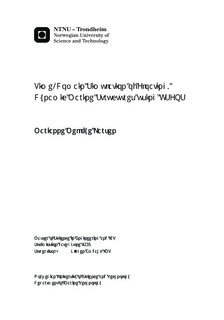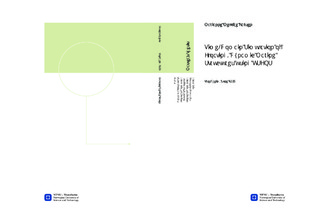| dc.contributor.advisor | Amdahl, Jørgen | nb_NO |
| dc.contributor.author | Larsen, Marianne Mellbye | nb_NO |
| dc.date.accessioned | 2014-12-19T12:09:43Z | |
| dc.date.available | 2014-12-19T12:09:43Z | |
| dc.date.created | 2013-09-16 | nb_NO |
| dc.date.issued | 2013 | nb_NO |
| dc.identifier | 648688 | nb_NO |
| dc.identifier | ntnudaim:9599 | nb_NO |
| dc.identifier.uri | http://hdl.handle.net/11250/238543 | |
| dc.description.abstract | This master thesis deals with calculation of the convolution integrals that constitutethe memory functions in the linear time-domain wave response equation. Basictheory needed to calculate the forces acting on floating structures is presented.The main motivation for the thesis is to investigate the feasibility of includingfrequency dependent added mass and damping in USFOS. USFOS is a computerprogram originally developed to simulate the response to extreme environmentaland accidental loads for fixed offshore structures. The program has been modified tobe able to handle also floating offshore structures. Floating structures are howeversubjected to diffraction and radiation terms often simulated as added mass anddamping terms. So far, these terms are assumed to be constant in USFOS. Thisis not correct, as the added mass and damping terms are frequency dependentin reality. The frequency dependence can be accounted for by adding memoryfunctions expressed as convolution integrals.The convolution terms are integrated from 0 to t, i.e. from the beginning of timeand up to this moment. This is neither possible, due to computer restrictions, nornecessary, due to damping effects. This thesis concentrates on finding the amount of?memory? that needs to be included in the convolution integral. A single degree offreedom system illustrating a platform oscillating in heave is analysed in MATLAB,both for regular waves and irregular seas. The convolution integral is calculatedwith different time intervals included in the memory function, and the deviationsfrom the full integral are analysed.Finally, a brief description is given of how the experiences obtained with thesingle degree of freedom system can be utilized in the implementation of frequencydependent added mass and damping terms in USFOS. | nb_NO |
| dc.language | eng | nb_NO |
| dc.publisher | Institutt for marin teknikk | nb_NO |
| dc.title | Time-Domain Simulation of Floating, Dynamic Marine Structures using USFOS | nb_NO |
| dc.type | Master thesis | nb_NO |
| dc.source.pagenumber | 109 | nb_NO |
| dc.contributor.department | Norges teknisk-naturvitenskapelige universitet, Fakultet for ingeniørvitenskap og teknologi, Institutt for marin teknikk | nb_NO |

